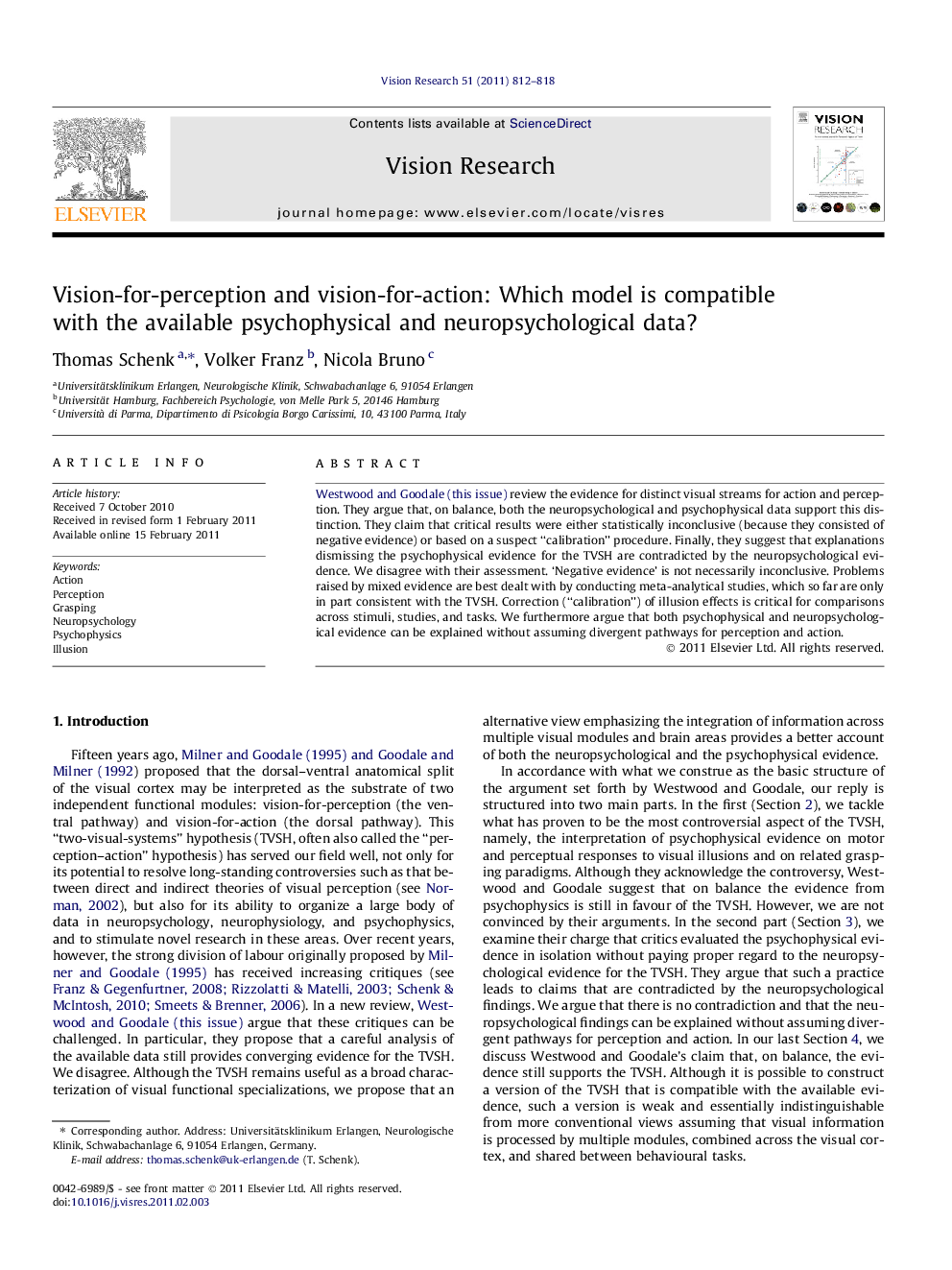| Article ID | Journal | Published Year | Pages | File Type |
|---|---|---|---|---|
| 4034363 | Vision Research | 2011 | 7 Pages |
Westwood and Goodale (this issue) review the evidence for distinct visual streams for action and perception. They argue that, on balance, both the neuropsychological and psychophysical data support this distinction. They claim that critical results were either statistically inconclusive (because they consisted of negative evidence) or based on a suspect “calibration” procedure. Finally, they suggest that explanations dismissing the psychophysical evidence for the TVSH are contradicted by the neuropsychological evidence. We disagree with their assessment. ‘Negative evidence’ is not necessarily inconclusive. Problems raised by mixed evidence are best dealt with by conducting meta-analytical studies, which so far are only in part consistent with the TVSH. Correction (“calibration”) of illusion effects is critical for comparisons across stimuli, studies, and tasks. We furthermore argue that both psychophysical and neuropsychological evidence can be explained without assuming divergent pathways for perception and action.
Research highlights► Reply to Westwood and Goodale’s recent defence of the ‘action-perception’ hypothesis. ► Westwood and Goodale’s interpretation of the psychophysical evidence is problematic. ► Integrative view of visual cortex can explain available evidence.
